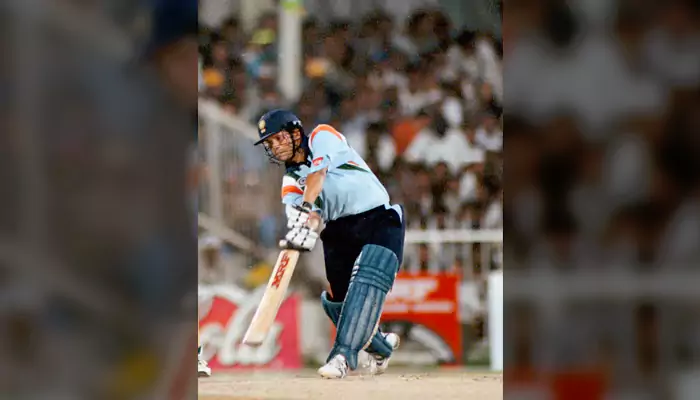
In Sharjah’s heat, Sachin Tendulkar turned two matches into a masterclass of skill, will, and precision — lessons that still shape cricket today
August has always been India's month of pride — a time when hearts swell, not just at the raising of the tricolour in 1947, but at every moment since when Indians have stood tallest on the world stage. Some of those moments have played out on the cricket field, where the pressure can swallow hope like the scorching midday desert sun.
In April 1998, that metaphor of pressure became a stark reality in Sharjah. A 24-year-old Sachin Tendulkar stood alone—not just against the world’s best team but the searing, unforgiving elements. Out of that cauldron, he emerged with two innings forever etched in the collective emotion of a nation.
On April 22, India faced a tough challenge. They needed either to win or reach 237 runs within 46 overs to qualify for the Coca-Cola Cup final against Australia. Facing the pace attack of Damien Fleming and Michael Kasprowicz—and the spin master Shane Warne—Tendulkar started cautiously. His first 50 came in 61 balls, crafted with sharp drives and careful cuts.

Credit: Men’s XP
Then, nature revealed its fury. A sandstorm swept across Sharjah, forcing play to halt for 25 tense minutes. When the dust finally cleared, it was Tendulkar who roared back—raising a tempest of his own. He transformed his 50 into a masterful 143 in just 70 more balls, sending nine scorching boundaries along the turf and launching five thunderous sixes.
His 143 from 131 balls at a strike rate of 109 felt defiant, comprising 57% of India’s total of 250. The scoreboard claimed India lost by 26 runs, but in spirit, victory gleamed—India’s place in the final was secured.

Credit: OP India
Two days later, on his 25th birthday, Tendulkar returned to face the same relentless assault. The air crackled with anticipation. Adapting in an instant, he softened his backlift, listened to the ball’s whisper, and used featherlight hands against Warne’s spin—then, when settled, unleashed a flurry of drives that stirred the crowd. Again, his acceleration was perfectly orchestrated—50 off 66 balls, then the next 84 in a mere 65.
By the end, his 134 from 131 balls, decorated with 12 fours and 3 sixes, had taken India to 275 for 4 and a six-wicket victory. Over the two matches, he scored 277 runs from 262 balls at an overall strike rate just above 105. He received both the Player of the Match and Player of the Series awards, with a tri-series total of 435 runs at an average of 87.

Credit: Crictracker
What the scorecards can’t hope to capture is the deep magic of those innings. Against Warne, Tendulkar’s bat became an artist’s brush—he scored 110 runs off just 77 balls without ever yielding his wicket. So flawless was his footwork, even Warne admitted later he felt shaken, almost haunted by the experience.
Facing Fleming and Kasprowicz, Tendulkar waited for the pulse of the game, then struck—making 37 off 32 balls from one, 35 off 34 from the other in the final. This wasn’t just aggression; it was a meticulous dismantling, forcing captain Steve Waugh into desperation, shuffling bowlers, and retreating to defensive fields much sooner than any plan.

Credit: DNA India
Cricket has evolved since 1998. T20 leagues now dominate fixtures. Bats are heavier. Boundaries are closer. Yet the significance of the Sharjah storm remains.
Tendulkar’s twin masterpieces proved that technical mastery and fearless audacity are not just compatible—they are essential partners in greatness. Each innings was mapped with the foresight of a chess grandmaster: claim the board, then strike when the opponent is weakest.